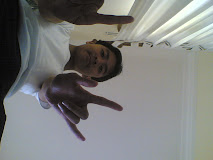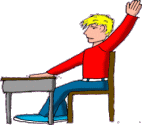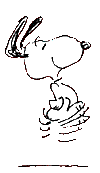for
Junior
High
School



SPITING Light
What you need
To do this activity you will need:
- sunlight
- a piece of card with a one millimetre wide slit cut into the middle
- a straight-sided glass filled with water
- a sheet of white A4 paper.
What to do
Fill a straight-sided glass with water and tape the card onto the side of the glass.
Place the white sheet of paper close to a window where sunlight is entering.
Stand the glass on the paper with the slit facing towards the Sun.
The sunlight should pass through the slit and split into its colour components as it enters the glass. The colours should appear on the paper.
What's happening?
White light is a mixture of many different colours. Sir Isaac Newton proved this more than 300 years ago when he directed a beam of sunlight through a slit and prism in a darkened room in 1666.
The prism bent, or refracted, the white light so that it fanned out into a rainbow (spectrum) of colours.
Splitting light using prisms is known as spectroscopy. Each chemical element has a unique signature when its light is split up.
Astronomers use spectroscopy to determine what planets and stars are made of by examining their light.

Static ELECTRIC

What you need ???
To do this activity you will need:
- a woollen jumper or clean hair
What to do ???
- Spread out the torn-up pieces of paper, small pieces of Styrofoam and salt on a table.
- Blow up the balloon and rub it on a woollen jumper or on your hair (your hair needs to be clean and dry).
- Hold the balloon near the things on the table. What happens?
What’s happening ???
Everything around us is made of tiny particles called atoms. Circling around atoms are even smaller particles called electrons. When you rub things together, some electrons rub off onto the other object – this creates an electric charge.
When you rub the balloon, electrons from the jumper move onto balloon. The balloon becomes ‘negatively charged’ because it has extra electrons. On the other hand, the jumper becomes ‘positively charged’ because it has lost some electrons.
The more you rub the balloon, the more static electricity you build up. The objects on the table react to the charge by becoming attracted to the balloon. After a while the balloon loses its charge, and the objects drop off.
Have you ever heard the phrase ‘opposites attract’? Things that have opposite charges attract each other better than a charged object attracting a neutral object (one with no charge). So when you rub the balloon with the jumper, there is a stronger attraction between the (positive) jumper and the (negative) balloon than between the (neutral) paper and the (negative) balloon.
Static electricity is different to the electricity used to power your lights at home – static electricity has no currents running through it and doesn’t use wires.

Applications
Photocopiers work by using static electricity. Inside a photocopier is a special drum that has a positive charge that can be affected by light.
When you copy an image, a light beam moves across the page. The light reflects off the white areas of the paper and hits the drum below. Where light hits the drum, it neutralises the positive charge. Dark areas on the paper don’t reflect light back onto the drum, so these areas of the drum remain positively charged.
Negatively charged black particles called toner are spread over the drum and stick to the positively charged areas of the drum. Positively charged paper is then passed across the drum, picking up the toner. Heating and pressing the paper fuses the toner to the paper, creating a copy of the original image.

Adapted from: http://www.csiro.com
Label:
experiment









































